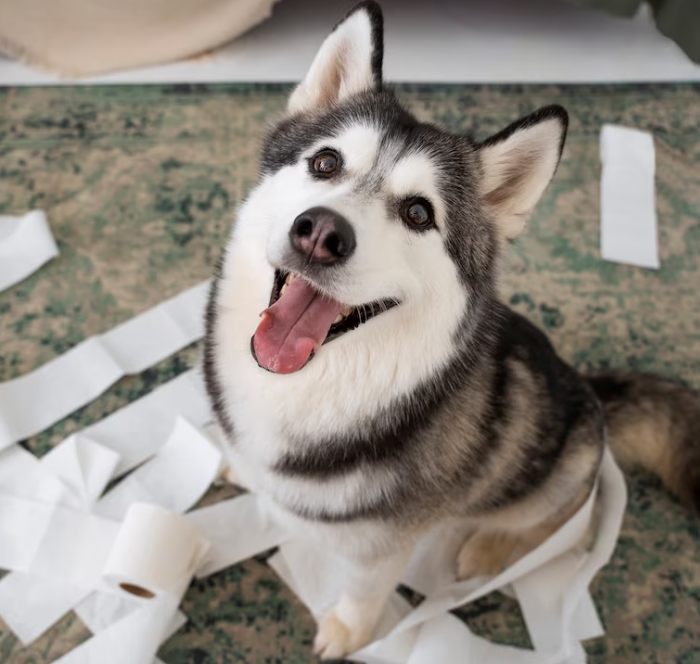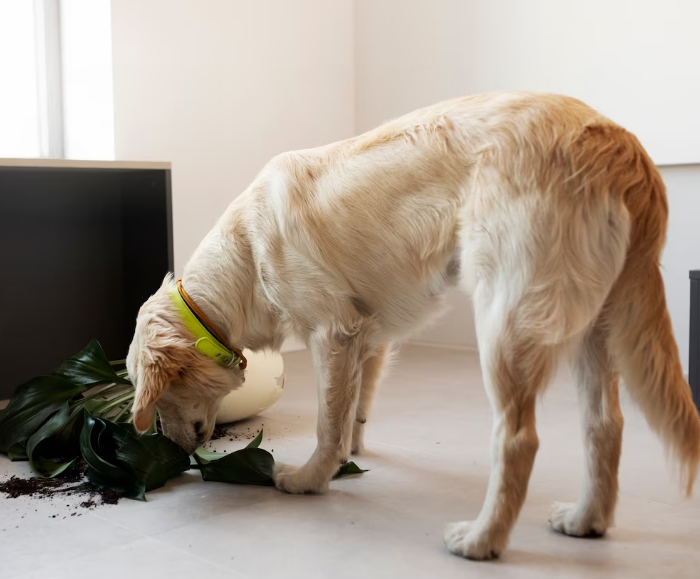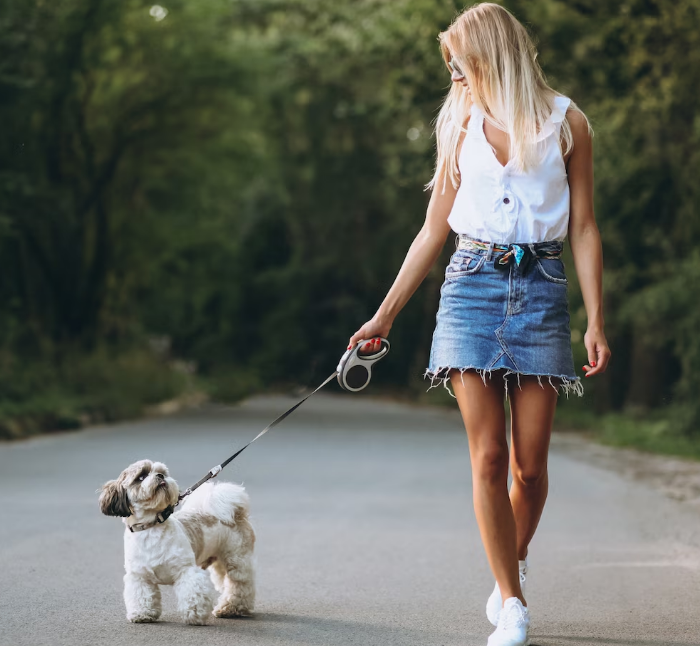2023-11-27
Relying on the unconditional love and support of a beloved pet companion brings a feeling of happiness to the lives of many dog parents worldwide!
There is one thing though that we sometimes tend to forget, namely that raising a dog is not only related to lovely and funny moments but also to a process of teaching the dog how to behave and properly navigate the world they live in.
This process can go smoothly or be a bit challenging depending on different factors, such as the dog’s personality and temperament and your skills as an owner. Yes, we have to acquire skills to properly raise our paw friends and know how to handle them, especially if behavioral issues need to be addressed.
Having a dog out of control is a problem that can be quite frustrating for many reasons-you do not know if the dog will show aggression towards you or another person or an animal; if the dog will get into a dangerous situation and get hurt; if you and your dog will be asked to leave the place you are at, etc. Not to mention that we also feel embarrassed when our dogs misbehave-we are their owners and the way they behave actually represents the way we raise them.
If your dog parent and your paw friend tend to be overly active, excited, or otherwise get out of control, the tips listed below may help you deal with this issue!

Some of the most common reasons for dogs to become overactive are:
During the process of growing dogs actively explore their surroundings, learn how to navigate their environment, and how to be well-mannered family and society members.
This process is typically accompanied by chewing, excessive sniffing, jumping, whining, etc., and other types of behaviors that are common for pups. Being overly active is also absolutely normal for most pups.
Luckily, dogs often manage to overcome many behavioral issues when they become adults. This of course does not mean that you should just hope for a problem to resolve by itself. You should keep in mind, that some issues may turn into bad habits and learned behaviors, if not addressed in a timely manner.
It is harder to correct an already learned negative behavior than teach the right behavior.
Despite the deviations from the standard breed characteristics that can always occur, there are many similarities among the representatives of the same breed, whose presence we can not deny. The energy level is one of these characteristics.
Some dog breeds are naturally more energetic than others such as the Jack Russel Terrier, the Border Collie, the Labrador/Golden Retriever, etc. With the process of aging, the energy levels will of course gradually decrease. However, some canines remain very active even in their adult and elderly years, like the Golden Retrievers.
We highly recommend that you do research in regard to the characteristics of the breed you consider getting, especially in terms of energy. If you are keen on having rather a laid-back lifestyle, then a dog of a highly energetic breed, may not suit you.
Whether your paw friend is of a high, mid-, or low-energy breed, they still need to spend a certain time a day playing, walking, exercising, or otherwise being physically and mentally stimulated.
Do not count on the fact that your dog might be a couch potato to skip regular walks and play/training sessions with them. Canines of different breeds may have different needs when it comes to engaging in activities, but a certain level of activity and mental stimulation is always mandatory.
Having said that, if you regularly neglect your duties to care for your dog’s physical and mental health, they may start looking for ways to spend their energy and keep up with what they are lacking.
Lack of socialization and proper basic obedience training is usually the root of almost all behavioral issues in dogs.
Socialization is crucial for dogs and should start at a young age. It begins at home and gradually starts involving relatives, friends, and unknown people at the places you visit with the dog, as well as pets in the household and other animals outdoors.
Dogs who have not been socialized are likely to be more prone to get overly excited, jump on other dogs and people, pull on a leash when seeing something, they consider interesting, or otherwise exhibit unwanted behaviors.
It is essential to teach your dog how to behave around counterparts as well as people and control their impulses.
In terms of training, teaching your paw friend basic commands such as “sit”, “recall”, “stay”, “leave”, etc., can benefit you a lot! Your paw friend will become more disciplined, and more encouraged to behave properly, as they will learn that they will be rewarded for showing the wanted behavior.
Walking on a “heel” and loose leash walking are also very important skills that a dog should be able to fulfill when outdoors.

It may sound to you a bit confusing in the beginning, and you may wonder what “positive reinforcement” has to do with gaining control over your dog…
Positive reinforcement is used as an effective technique to motivate a dog to continue exhibiting a certain type of behavior once they start doing it. In other words-you should encourage the dog to do the right thing.
The more motivated your canine is to behave properly, as they know they will get rewarded for that, the less interested they will be in showing unwanted behaviors.
In terms of being overactive, this means rewarding the dog when they are calm and control their impulses.
For instance, if you notice that your dog is getting overly excited and is about to get out of control, you should wait for them to calm down, and once they are fully settled, you should praise and reward them.
Positive reinforcement requires the use of a proper motivator or simply put-what motivates your dog the most. In the best case, this will be food, or if your canine is not really food-driven, you may need to find toys they like or enthusiastically praise them and pet them.
Treats can be divided into three types: high-value, mid-value, and low-value treats, based on what type of behavior you train- a new one or an already trained one; how difficult the task is; how many distractions there are.
If you teach your dog a new behavior; if your dog struggles with a certain task; if there are many distractions; or if your dog has performed perfectly, the treats should be of high value. These treats are given mainly during the training sessions and Not outside of them as regular treats.
Timing is another important component of the positive reinforcement method.
It is essential for the training that you mark the wanted behavior and reward your dog the moment they show the wanted type of behavior. If you praise and reward them too early or too late, you may either reinforce an unwanted type of behavior or make your dog wonder why they are getting a reward.
The reward should be given the moment the dog does the right thing.

Leash training is required for both pet dogs and assistance animals, as they need to be able to walk calmly when in public. Being overactive can lead to pulling on a leash and jumping on animals or people, which is unacceptable, especially for dogs whose owners want to train them as service animals.
Leash training should start with choosing the right leash for your dog based on length, width, material, strength, etc. Then the process should start at home by gradually introducing the leash to your dog.
In the beginning, you may need to help your dog get accustomed to the presence of the leash. Positive reinforcement can come in handy here! By rewarding your dog for being interested in the leash you are helping them develop a positive association with the leash.
The next step is to put the leash on your paw friend and conduct short training sessions at home (in a quiet room without distractions (the maximum length should be 10 minutes). Walk your dog in your home, by making small steps and regularly rewarding them for calmly walking by your side.
Gradually, you can start adding more time prior to rewarding your dog. If they perform very well, you can start adding distractions as well.
Start with slight distractions, i.e. going to a busier room or your backyard. After several repetitions, you can move to another place, like a dog park nearby, and monitor how your dog performs on the leash. If the distractions are too intense for them, you should reduce them again. Remember to make small steps and not rush the training.
We will list another leash training technique that can come in handy, especially if your dog pulls on the leash a lot.
To get started, you need to make sure you have the necessary tools which are two leashes (preferably six feet long), a harness your dog will feel comfortable with, and treats.
First, you should put the harness on your dog and connect one of the leashes to it. The second step is to take the handle end of that leash and wrap it around a heavy piece of furniture.
Attach the second leash to your dog's collar.
As mentioned above, you should start practicing at home, in an area with no distractions.
Hold a treat in front of your dog, but make sure that you keep it at a distance long enough so that they can not reach it. Your paw friend is likely to start lunging for the treat, which is a standard reaction, unless, of course, your dog is not food-driven. Then you should choose the right motivator to keep them engaged in the training session.
If your dog starts lunging for the treat excessively, you should gently pull the front leash towards you. This will help you control your dog even more.
After a short time, your paw friend is likely to calm down. The moment your dog is fully relaxed, you should praise them and feed them a treat. It is essential that you reinforce the behavior only if you are absolutely sure that your dog is completely calm.
Practice the steps above several times, until your dog is able to remain calm when seeing the treat.
After a few repetitions, you can start increasing the duration and rewarding your dog for a bit longer. Add a second or 1–2 seconds after every set of 10 sessions. Be patient and consistent and do not rush the process.
After practicing several days in a row (a few times a day by keeping the sessions short), you should be able to remove the training devices and continue practicing without them.
You should never yell at your dog if they do not show the wanted behavior, but try to encourage them to exhibit the wanted one.
However, it is essential that you know what tone of voice to use during the training when giving the command and when praising your paw friend.
If you are pleased with what your dog does, you should use a happy, enthusiastic voice and a higher-pitched tone.
On the other hand, if you want to give your paw friend a command or to show your disapproval of their behavior, then you should use a lower-pitched tone of voice.
Try to stick to a routine as much as possible and discuss with your family members what training approach you have decided to use.
Holding on to a unified approach when raising and training a dog will make the training consistent and will also increase the chances for success.
Make sure that you care for your pup’s physical and mental health and keep them fit.
It would be beneficial for both you and your dog to spend time together and engage in interesting activities. You can also consider taking them with you on hikes, jogging, or other outings where they may feel enthusiastic to accompany you.
You can also always count on the variety of dog toys on the market, such as puzzles, Kong toys, ball launchers, tug toys (there are also solo tug toys so that your dog will still have fun even without you), etc.